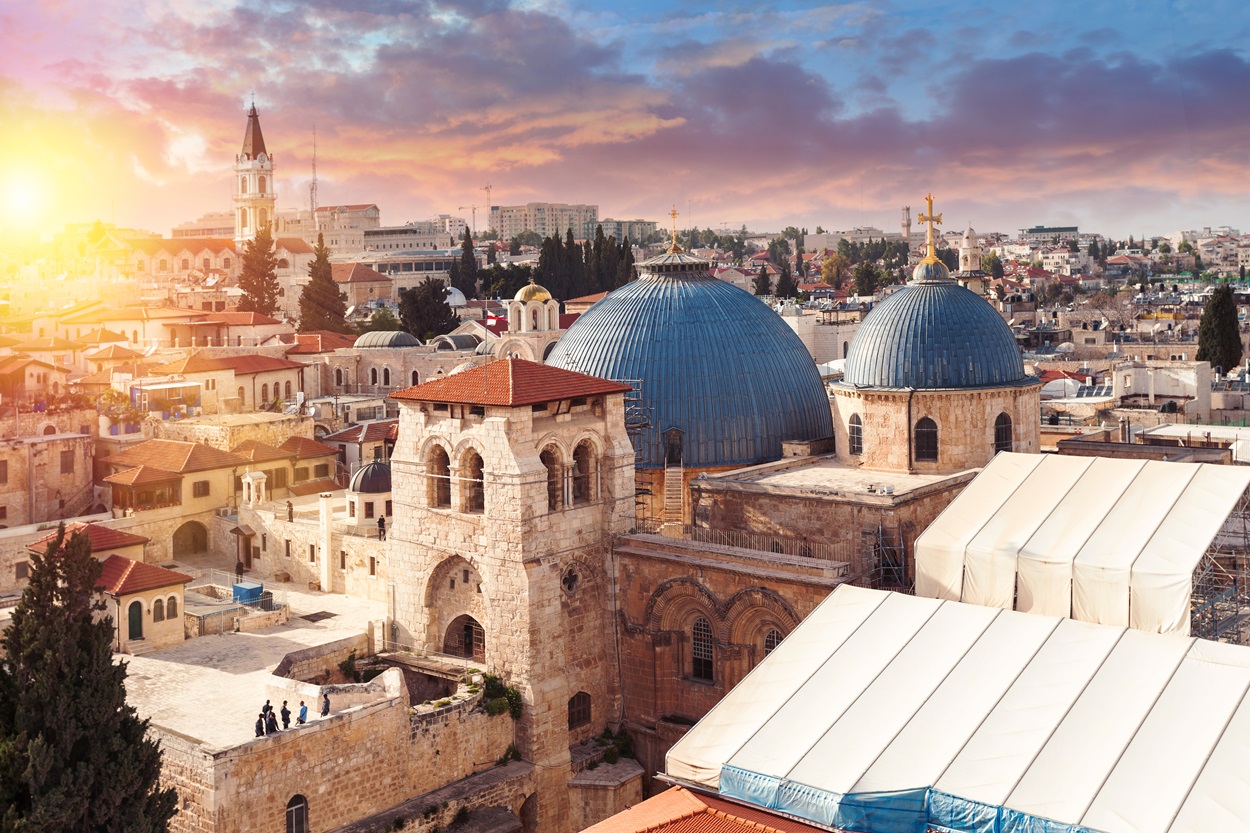Excavations conducted by archaeologists from the Sapienza University of Rome have uncovered new findings about the origins of the Church of the Holy Sepulchre, located in the Christian Quarter, Jerusalem.
The Church of the Holy Sepulchre is a 4th century church that serves as the seat of the Greek Orthodox Patriarchate of Jerusalem.
Tradition holds that the church stands on the site of Jesus’ crucifixion, burial, and resurrection, making it one of the holiest sites in Christianity.
According to a press event attended by members of the Greek Orthodox, Latin Catholics (Custody of the Holy Land), and Armenians who are custodians of the church, excavations have revealed that the site was originally an ancient quarry, evidenced by deep saw cuts in the rocky terrain and block stone extraction.
Quarrying trends were observed to extend northeast to southwest, with some areas exceeding five metres in depth. The quarry was abandoned during the Iron Age, which was repurposed for agricultural use growing olives and grapes.
After the siege of Jerusalem during the Jewish–Roman War, Emperor Hadrian founded a Roman colony, the new city of Aelia Capitolina, and constructed a pagan temple on the site of the quarry.
The temple remained in use until the 4th century AD, where it was demolished by Constantine the Great and replaced with the Christian church. Macarius I, the Bishop of Jerusalem, sought Constantine’s permission to excavate where Christ was believed to be buried. The excavation uncovered a rock-cut tomb, which Macarius identified as the burial site of Jesus.
According to the recent study, evidence of a Roman cultic structure from Hadrian’s reign has also been uncovered, as well as traces of large-scale levelling of the rocky terrain for constructing monumental structures.
What was built during the 4th century “was a complex sanctuary, with places of worship and veneration, with different liturgies, with visiting routes. Its very conformation provides for visits by pilgrims who can circulate around the points of veneration, who can find shelter under the porticoes, according to the methods well known for pre-Christian and early Christian sanctuaries”.
The excavations are now centred on the north aisle of the church to further examine the Roman cult structure and its implications. Additional work includes documenting the entire basilica and its annexes, as well as analysing materials to enhance understanding of the site’s historical evolution and its role within the city.
Header Image Credit : Shutterstock
Sources : Sapienza University of Rome





